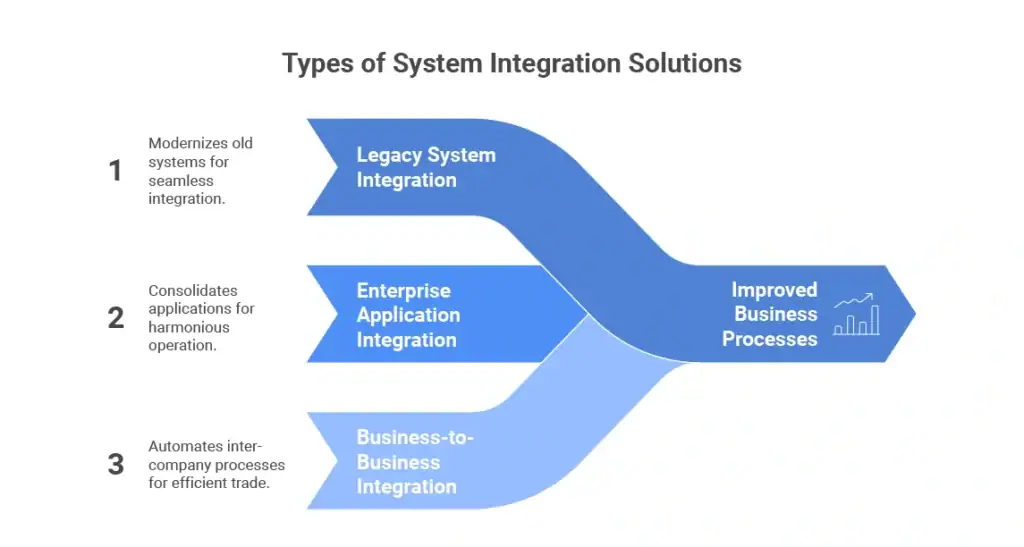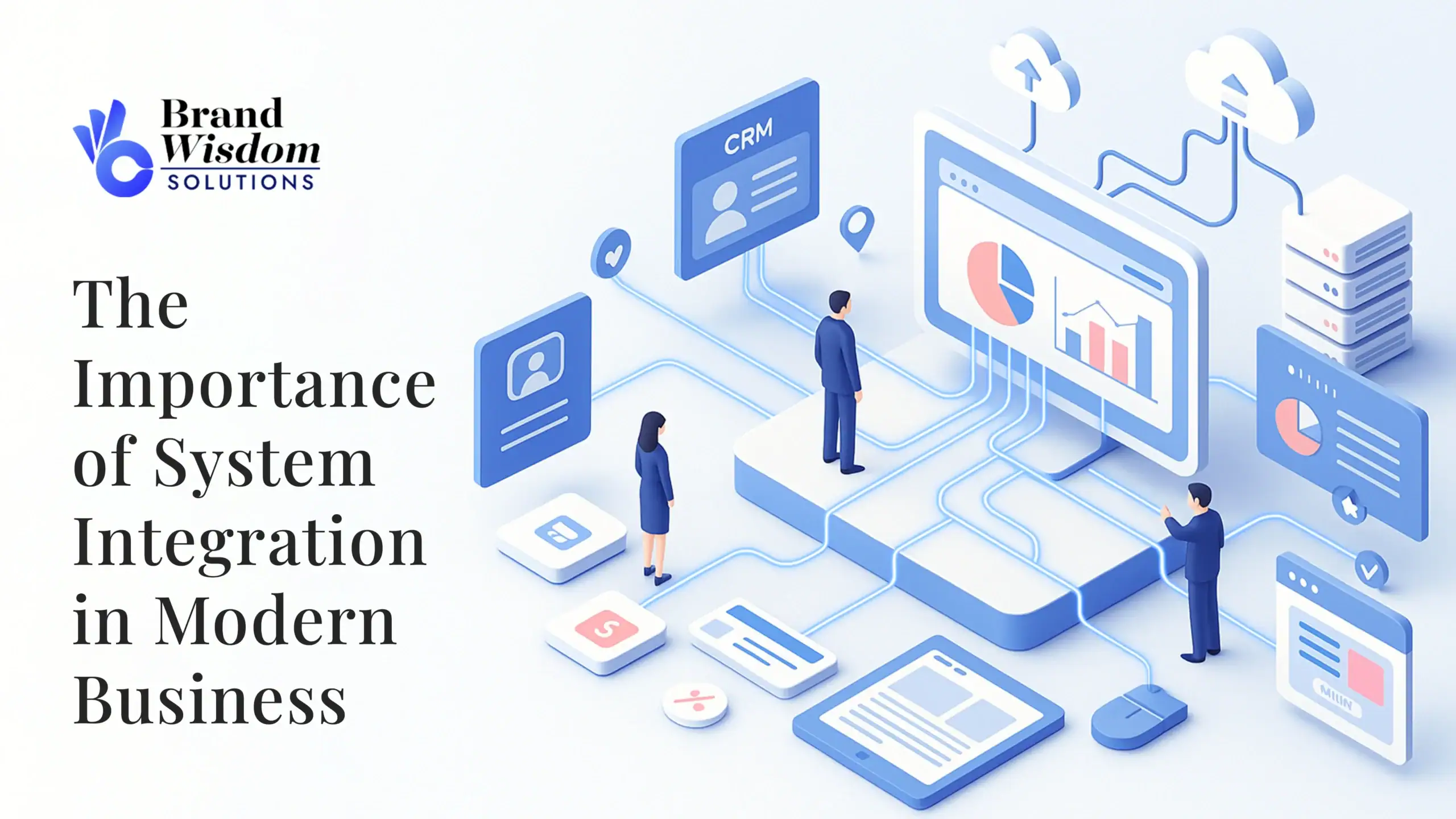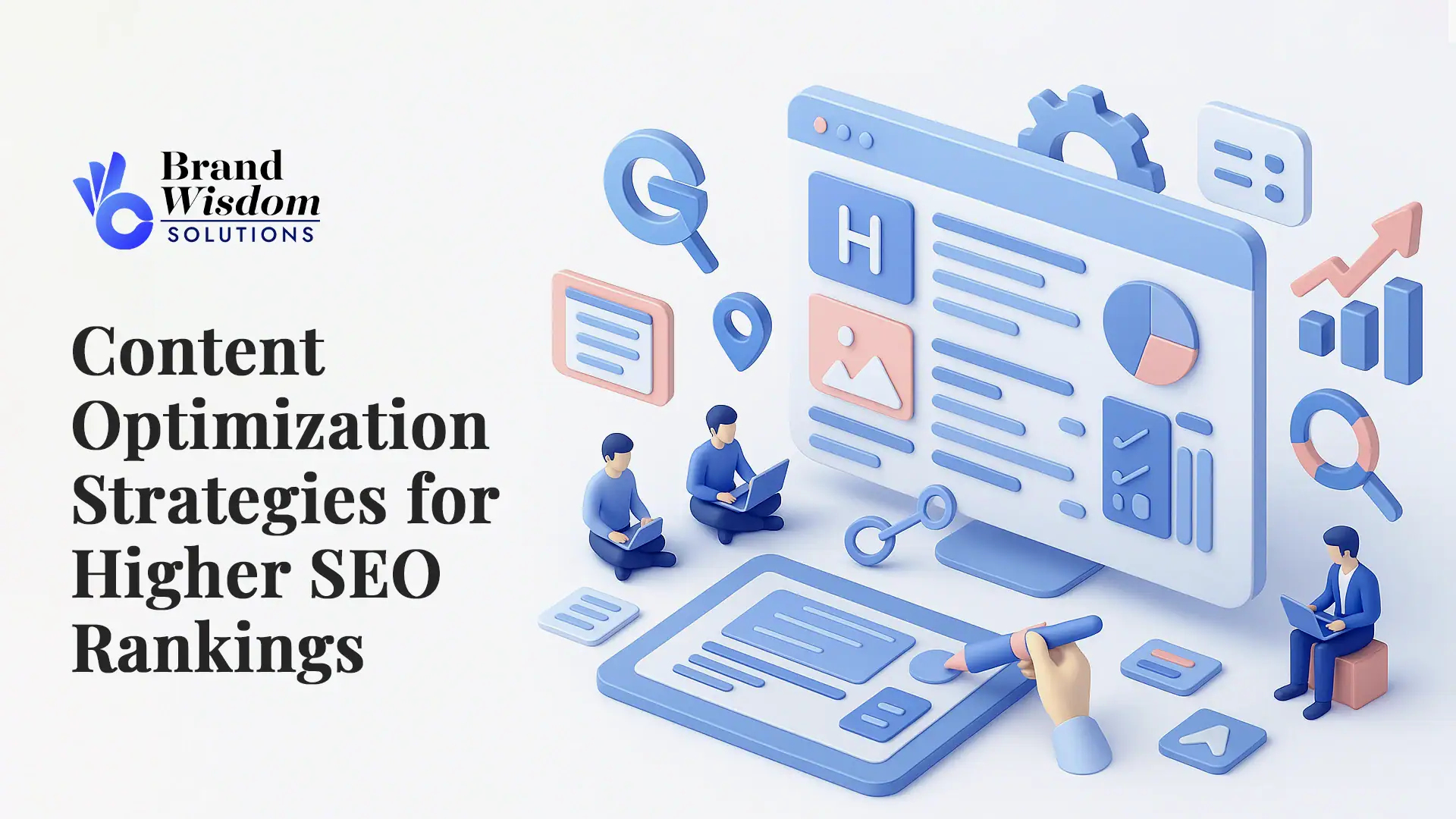In the contemporary business world, system integration is the way to success. It is all about consolidating various information systems. This simplifies communication and makes work easier on a daily basis. As technology revolutionizes how businesses are conducted, integrating numerous systems is vital. It contributes to efficiency in operations and allows individuals to make informed decisions. When a business integrates independent systems, it is able to reduce duplications and rectify workflows. It also initiates a digital transformation within the organization. In the following, we’ll consider why system integration is important and how it impacts business life on a larger scale.
Understanding System Integration in Modern Business

Effective systems integration is crucial in the current quick-to-change business world. It enables different isolated systems to be linked and establishes seamless channels for various components to communicate with one another. This facilitates easy sharing of data, and individuals can collaborate effectively. Integrated systems enable you to dismantle barriers and view what happens in every department. This is crucial for any company intending to outshine others.
The integration process influences the way a company handles new demands. It facilitates decision-making fast and allows information flow without difficulty. Whether you have a small business or a large corporation, systems integration benefits your business to do more work in a good and speedy manner.
Defining System Integration
System integration makes individual software programs be part of one network. It allows every component to exchange data and collaborate in a seamless manner. Connecting disparate systems, such as outdated tools and new tools in companies, results in an integrated system. This transformation facilitates work to happen quicker and enables easier access to information.
An integrated system also assists business processes since it enables software that previously didn’t communicate with each other to now interface and exchange information. For instance, when you have customer management software that directly interfaces with inventory management tools, there are less duplicated tasks. This arrangement enables individuals working in a business to be consistent and on the same page with their tasks.
System integration is successful when systems are aligned with what the business needs to do, ensuring things work together well. It makes communication between platforms easy. It also provides a better user experience. With systems connected, companies have a good overall view of all the activity within the company. That is a big picture nowadays since people rely so heavily on data on a daily basis.
Key Components of System Integration
System integration harmonizes important pieces that assist with data handling, improved workflow, and simple communications. One of the major pieces is the integration platform. This system ties various subsystems that perform specialized tasks. It keeps business logic straight and ensures that data formatting can line up in the numerous programs a company employs.
Data integration is also critical. It makes different systems communicate with one another through providing them with a shared data format. This eliminates issues with the use of varying data formats and aids work to be accomplished more quickly. Proper data integration receives and transforms data, making it useful information. This makes the systems more active, responsive to change, and can aid in satisfying business needs.
There are also specific subsystems, such as those used for inventory tracking or money management. These integrate to the central integration platform. When there is this integration in place, all the systems are well integrated with each other. Combine integration platform, data consolidation, and specific subsystems to help create a solid foundation for good system integration. This enables the entire configuration to function better, by utilizing data handling and effective communication among various systems.
Why System Integration Matters for Indian Businesses

Indian companies tend to operate with numerous different IT systems. They may be new or old legacy systems. For this reason, a system integrator is necessary to tie them together in the appropriate manner. This is to ensure business requirements are fulfilled. With the proper integration techniques, companies can expand, become more efficient, and prevent issues that keep them back.
Integration gives Indian businesses quicker workflows and real-time data. They need this for growth in today’s challenging market. With the optimization of weak points in their IT infrastructure, companies can leverage better decision-making and reap maximum benefits from their core business processes. This optimizes their business functions. Integration allows them to address new challenges, work fast, and utilize all of their IT systems in unison.
Addressing Fragmented IT Environments
Many businesses find it hard to work with different systems that do not connect well. These separate apps make it tough to share information. This can slow down what you do at work and hurt your main business functions. Using integration methods can help join these systems and make your work run better. For example:
| Harmonising disparate systems | Having integration means different software can work well together. This closes the gap between different systems. |
| Minimising manual efforts | When data entry is automated, there is less chance for human error. This also lets your team spend their time on more important work. |
| Optimising business processes | With a single IT setup, it is easier to move from one system to another. This helps make your business processes smooth. |
| Adopting scalable methods | Integration also lets you add new apps with ease, giving your business room to grow. |
By fixing broken, separate IT setups, companies can boost their operational efficiency. This makes sure that both business processes and business functions work well, helping your company do better now and in the future.
Enhancing Operational Efficiency
Operational efficiency becomes much improved when you have integrated systems. Businesses do not need to go through the same manual entries of data repeatedly with these systems. Work processes become more efficient and straightforward, and thus individuals do not repeat the same thing. This ensures reducing operational costs and ensuring crucial tasks are completed on time.
When you integrate diverse systems, you can exchange information without issues. This type of integration helps you make quick and certain decisions. Integrating these systems helps enhance business logic and allows most mundane tasks to occur automatically. Ultimately, this helps save you time and funds. For instance, when HR software integrates with payroll systems, admin tasks become much simpler.
Good integration makes different departments work effectively together. All teams share the same platforms, so no fear of systems refusing to cooperate with one another. With real-time data for inventory tracking, sales monitoring, etc., all aspects of the business are working towards the same ends. You have less error and wastage. It results in cost savings and improved work on your operations.
Types of System Integration Solutions

System integration consists of various solutions that address most business requirements. Legacy system integration, for instance, assists in modernizing and integrating old, aging systems with newer ones. Enterprise application integration consolidates disparate applications into one unit that operates harmoniously. Both of these products can bridge the gaps in your existing configuration.
Integration extends to business-to-business (B2B) solutions. These automate work between companies and ensure trade flows without hitches. Every integration project differs. Some are straightforward, while others may be very intricate. But all projects apply special methods to achieve the right objectives. These kinds of solutions illustrate how adaptable integration needs to be to improve business processes.
Legacy System Integration
Legacy system integration assists in the fixing of issues that arise from implementing older systems that are still necessary for a company. By connecting these older systems with new applications, businesses continue to keep everything moving and begin utilizing more assistive tools. This applies to anything from transportation management systems to data warehouses, so every aspect of a business can enjoy improved integration.
Custom development is also very crucial to deal with data translation against legacy systems. Suppose you have a legacy CRM application. If you plug it into a main data store, customer details get updated and synchronized without any issues. In this manner, companies are able to retain what they have invested time and money in, but are also able to utilize newer technology.
Replacing legacy systems with integration builders building strong systems without having to dismantle everything. This action safeguards critical day-to-day jobs that people rely on. Ensuring old systems integrate well with new ones allows businesses to transform fragmented systems into well-organized, expanding centers. This process makes legacy systems, custom development, and data translation all blend together, which makes legacy system integration better for all.
Enterprise Application Integration (EAI)
Enterprise application integration is the act of linking various and independent applications. The process of integration assists in making things operate efficiently in most business activities. In uniting how information flows and easing communication, it becomes more convenient to handle major business operations on a day-to-day basis.
When the firm employs application programming interfaces and shared data formats, energy is directed into data translation among individual subsystems and legacy systems of the past. As a result of this, it becomes easier for a company to become more agile and respond to evolving business needs. The team can also simplify workflows, making the company’s performance and operational efficiency improve.
Business-to-Business (B2B) Integration
Business-to-business (B2B) integration facilitates organizations to communicate with one another in an easy manner. It allows them to exchange data and resources more efficiently and quicker. The integration process utilizes the very same electronic formats and application program interfaces (APIs) to couple different and disparate systems. This enhances operational efficiency daily. Business functions require fewer manual data entries when they operate in coordination using electronic data interchange. Work can proceed quicker. With effective B2B integration, business enterprises are able to reduce cost of operations as well as improve data management. This allows them to have greater insights and collaborate with business partners more closely. In the current business landscape, these actions assist individuals in doing more and obtaining superior results.
Common Approaches to System Integration

There are numerous methods of linking various systems within a business. All of them are useful for varying business requirements and technical configurations. Point integration connects individual systems to one another immediately. An enterprise service bus, or ESB, is a central hub. The hub enables numerous apps to communicate with each other and assists in data transformation. Integration in the cloud provides further flexibility, so companies are able to evolve and transform quickly when requirements change. Awareness of these integration process methods makes workflows more efficient and enhances operations. It can streamline all aspects of a business to communicate with each other and even between different systems.
Point-to-Point Integration
In point-to-point integration, you create direct connections between various applications. In this configuration, they are able to communicate with one another in a straightforward manner. The data can travel quickly, and you do not require a central hub. This is a suitable method if you have limited things to link. It performs well if the integration process does not have a lot of demands.
However, when you increase the number of software solutions and attempt to expand, having numerous isolated connections becomes difficult to manage. It may be too much for individuals to maintain since there are quite a number of links. Point integration usually involves old or legacy systems in most cases. One should be very keen on data transformation during this phase. This ensures that the integration process continues to operate effectively. As long as you take care of these details, you can maintain good operational efficiency and don’t make things too convoluted with all those separate applications.
Enterprise Service Bus (ESB)
An enterprise service bus is similar to a central hub that enables various, usually unrelated, applications within a business to communicate with one another. This type of architecture allows it to connect many software solutions much more easily and to enable data to travel among them smoothly. Utilizing a standard data format, the enterprise service bus facilitates the increase in efficiency of operations. It also facilitates reducing the manual entry of data and, in the process, manages issues arising when data formats are not compatible. The ESB can both support legacy systems as well as the new cloud-based arrangements. This allows your business processes to operate in a fast manner, and your organization can construct new and improved applications in the future.
Benefits of Effective System Integration

If you apply a proper integration process, it will yield numerous advantages to your business. The primary objective is to link various or disparate applications, thus enabling your vital data to flow freely between locations. This implies your employees don’t have to waste as much time on manual entry of data, and there will be less error. By eliminating such errors, you save time and money.
When it all gets combined into a shared data format, your business functions more effectively. You’re able to easily locate the facts you’re looking for, and the decision makers receive improved knowledge from this fast, transparent data stream. Having it all integrated makes it easier for you to be able to respond to new situations and keep ahead of any business needs that arise. This way, your core business operations remain robust, your workforce becomes more efficient, and your company remains poised to expand and evolve.
Simplified Workflows and Working Together
Successful enterprise application integration makes work easier and enables individuals to work together more effectively across all areas of the company. When disparate systems are integrated, you allow information to flow from one location to another with ease. This can reduce time wasted to manual data entry and get you improved operational efficiency. With an integrated system, there are also fewer errors, and it makes teams communicate with each other better. With data transformation, whoever needs it has access to the information in real time. By employing this method of utilizing information systems, you and your company can make quicker decisions and improve the working environment for all.
Better Accuracy of Data and Analysis
Greater accuracy in managing data enables you to acquire significant information regarding the operation of the business. When you implement integration platforms, you can integrate varied systems within a single location. This assists in reducing errors that typically occur due to manual data entry. All of this then operates based on a universal data format, ensuring that the data transition is properly harmonized with all enterprise applications. For this reason, you can transfer massive amounts of data seamlessly from one system to another. Businesses can then consider viewing more data, so they utilize facts in order to make more informed decisions. All of this will serve to increase operational efficiency. Utilizing integration does more than just simplify and hasten tasks. It also enables companies to easily switch when they need to.
Overcoming Challenges in System Integration

Handling issues that result from attempting to join various systems requires a systematic approach to accomplish it. There usually will be complications in the way that systems integrate with each other and whether or not they can scale as you do. Due to that, it is essential to leverage integration platforms that enable legacy systems and new, new applications to communicate with one another in the proper manner. Security and regulation always need to be at the top of your list while integrating. You must employ good data management practices and adhere to common formats. Your team can reduce risks, perform better work every day, and truly embrace all the positives the benefits of system integration have to offer if you purchase the correct tools and the correct methods to get the job done.
Managing Compatibility and Scalability Problems
Working with a lot of various and independent systems within a company makes you need to consider how they integrate and whether they can scale when you require. Having an integration platform will enable you to integrate the various software programs you use. This allows legacy, old systems and special subsystems to collaborate as you prefer.
Using plans like vertical integration and horizontal integration, you remain flexible to adjust to new business needs since things change over time. These measures assist in keeping your operation costs low as well. Subsequently, using the same method to alter data when carrying out data transformation, your entire system will become more compatible. This is extremely necessary should you desire your business environment to remain efficient even though things change around you.
Keywords employed: disparate systems, legacy systems, integration platform, business requirements, vertical integration, software applications, data transformation, operational costs, business environment
Providing Security and Compliance
It is extremely important to look after security and compliance early in the integration process. It keeps your data secure and earns the confidence of others. For this purpose, employ strong encryption techniques. Ensure you adhere to all the industry standards while integrating different applications. This may reduce the likelihood of issues while integrating different systems.
Plan your integration process in advance. Make sure data entry and how you process information are at high standards. This minimizes opportunity for something to go wrong. A system integrator must also establish good methods of monitoring systems and detecting threats quickly.
If you prioritize security in your integration projects, you build a secure business environment. It also enables you to integrate well with other systems that have been assembled. With these steps, a system integrator can make things go smoothly and securely for all.
Conclusion
In conclusion, utilizing robust system integration is essential for businesses that seek to optimize how they operate. This is also beneficial to enable them to navigate the difficult aspects of modern business life. Consolidating different systems through various methods, such as point-to-point or an enterprise service bus, is capable of simplifying work activities. It is also beneficial to have improved data and more transparent insights. With digital transformation continuously evolving the way things are done, maintaining good system integration allows companies to remain agile and prepared. This is imperative now because there is increased competition in the business world. All these enable a business to perform well, catch up, and surpass.
Frequently Asked Questions
What are the largest obstacles to system integration for Indian businesses?
Indian businesses have a lot of problems when they attempt to consolidate their systems. Most of them maintain legacy systems that are incompatible with modern technology. There is never sufficient funds to purchase contemporary tools. There are few skilled professionals who can assist. Apart from that, they must abide by stringent rules and maintain data security. All of these can become obstacles to smooth integration and complicate working effectively.
How is system integration aiding digital transformation?
System integration assists in digital transformation by ensuring data flows smoothly between numerous platforms and applications. Through this smooth integration, companies can become better at doing business. It assists them in making decisions quicker and being prepared when the market shifts. All of this can result in generating more new ideas and staying ahead of other people. Proper system integration boosts operational efficiency and assists companies in performing well in the digital arena.
Can small and medium-sized enterprises (SMEs) gain from system integration?
Yes, small and medium-sized businesses can actually gain much from system integration. It assists to increase the efficiency of operations and simplifies how things are run. Integrated systems also assist you in having improved and more accurate information. When you utilize integrated systems, you are able to make improved decisions and match up with other companies in the dynamic market.
What are best practices for effective system integration projects?
Good planning is required for effective system integration projects. One should include all the people who have a stake in the work and have clear discussions with everybody. Ensure your timeline is realistic, and make use of useful automation tools. It is necessary to train your staff. Monitor the integration process on a daily basis. In doing so, you are sure that the work corresponds with the business objectives. Should issues arise, be prepared to resolve them and remain firm as you complete the integration process.
How long does a typical system integration project take?
How long it takes to complete an integration project can be quite varied. It relies on how difficult the work is, how much work there is to be done, and what technology you have. Most of these types of projects take anywhere from a few weeks to a few months. This allows you to test everything in the proper manner and have everything in position without haste.




